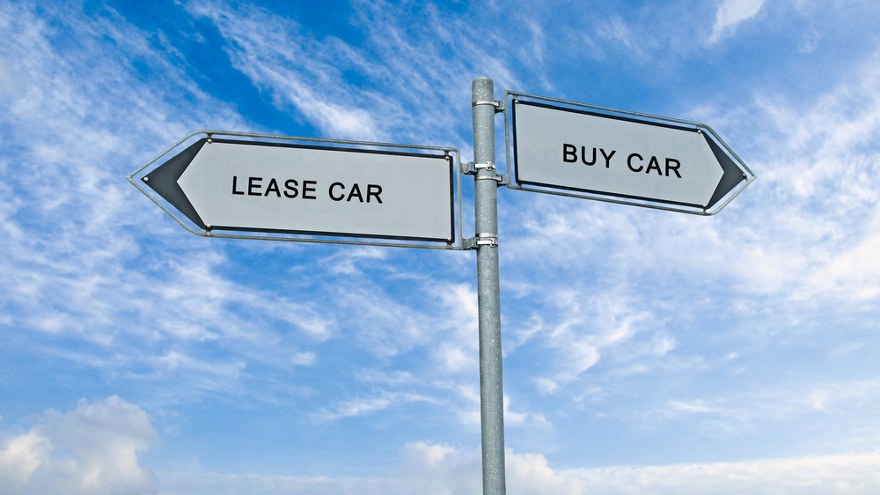Equifax sees encouraging payment activity in subprime

By subscribing, you agree to receive communications from Auto Remarketing and our partners in accordance with our Privacy Policy. We may share your information with select partners and sponsors who may contact you about their products and services. You may unsubscribe at any time.
ATLANTA –
As consumers start to edge away slightly from new-vehicle leases toward financed installment contracts for used vehicles, Equifax Automotive deputy chief economist Gunnar Blix is encouraged by recent payment performance — no matter what type of deal is attached to the unit.
The latest Equifax data showed auto finance balances increased by $8 billion in the fourth quarter, continuing a six-year upward trend. Meanwhile, Equifax spotted that auto delinquency rates increased only slightly with 4.1 percent of auto balances registering in at 90 or more days delinquent on Dec. 31.
“We’ve seen improved payment performances in recent vintages, in particular subprime and deep subprime,” Blix said during a recent phone interview. “We’ve seen credit scores come up a little bit, too.
“There are two factors going there,” Blix continued. “Consumers as a whole, their credit scores are being lifted by the longer time since the Great Recession as well as the good economy that keeps them employed. Also, the more aggressive lenders have pulled back a little bit especially in the deep subprime to adjust their risk appetite.”
Sparked by off-lease units, Equifax is seeing a healthy situation for used-vehicle sales. The credit bureau’s data indicated sales of new vehicles fell 1.9 percent in 2017 while used-vehicle deliveries climbed 1.5 percent.
Blix insisted much of this movement was the result of a continuation of off-lease activity, which are attractive to buyers looking for still-new vehicles at a good value. He added this trend of shrinking new sales and increasing used sales is expected to continue throughout 2018.
Subscribe to Auto Remarketing to stay informed and stay ahead.
By subscribing, you agree to receive communications from Auto Remarketing and our partners in accordance with our Privacy Policy. We may share your information with select partners and sponsors who may contact you about their products and services. You may unsubscribe at any time.
“The mix of off-lease vehicles has been changing,” Blix said. “That’s driven down the prices for used cars a bit that have made banks adjust their residuals. Those leases have become a little less attractive than they used to be. The loan on a used car is starting to look more attractive in terms of payment to the consumer.
“It’s payments that are driving it more than the overall value,” he continued. In many ways, consumers are still very payment centered when it comes to loans and lease. They’re looking at what the payment is going to be and how is that going to work with their finances. In general, because there are so many used vehicle coming off lease of very good quality, that’s making for a better value proposition.”
Equifax Automotive also highlighted six other points associated with changes coming to lease share and activity, including:
• Because of the falling volume of new-vehicle sales, lease activity is also expected to dip slightly.
• A larger share of used transactions are financed, therefore leasing will pull back slightly.
• Between 2010 and 2014, the share of accounts for captives written as leases increased steadily from 28 percent of accounts in 2010 to nearly 40 percent in 2017.
• As vehicle prices have risen, more captives are packaging together deals with incentives, helping them grow their share of lease portfolios.
• 70.8 percent of vehicle leases were in the three-year range (between 26 and 37 months) in 2017.
• Two-year leases have become somewhat less common (6.3 percent of accounts in 2017), but similarly leases longer than three years have become less frequent (22.9 percent of accounts in 2017).
Meanwhile, Equifax Automotive mentioned that commercial banks are reducing their exposure to auto financing. Blix shared three specific points, including:
• Banks have pulled back their market share of auto originations from 39.2 percent in the fourth quarter of 2016 to 33.9 percent share in the fourth quarter of 2017.
• Credit unions had a 27.9 percent share of originations in the last quarter of 2017, while captives represented a 32.6 percent share.
• Independents, monolines and dealer financing made up the remaining 5.6 percent share, down just 0.1 percentage points (10 bps) from the previous year.
“With the market looking relatively flat, many (commercial banks) have chosen to pull out of a lot of lending and auto lending in particular,” Blix said.
“In terms of where they’re choosing to deploy capital, I think that’s very individual to the bank,” he continued. “It’s an internal decision on their part and not something we can speak to in general.”
Blix also mentioned during the phone conversation about how student loans aren’t necessarily a headwind to dealerships and finance companies retailing vehicles.
Equifax data showed outstanding student loan debt grew and stood at $1.38 trillion as of Dec. 31. The credit bureau noted 11.0 percent of aggregate student loan debt was 90-days delinquent or in default in Q4, a small decline from the previous quarter.
“The overall size of the student loan is obviously a bit concerning. It’s grown a lot taking up about 36 percent of the outstanding non-mortgage debt. That is effecting how consumers are acting,” Blix acknowledged.
“It’s very individual, though,” he continued. “The largest student debt is typically associated with professionals with law degrees or medical degrees, MBAs with great income potential. It may effect what vehicle they buy, but it’s not presenting a huge drag. If you’ve got student debt and you didn’t get a degree, that’s where the biggest drag is happening.
“I think it’s a bigger drag on mortgages because that’s a bigger investment,” Blix went on to say.
The latest report from Equifax containing the latest data from through the credit market can be found here.


